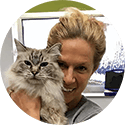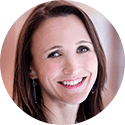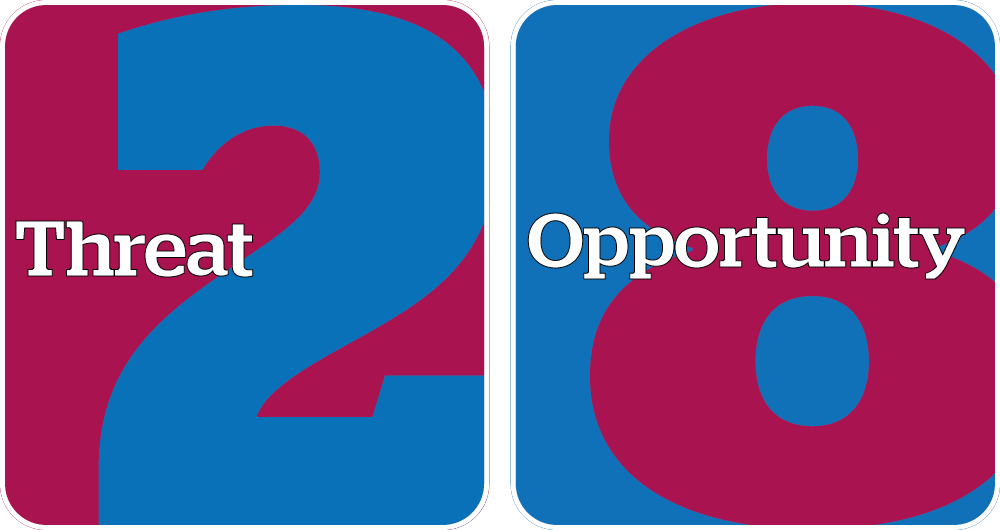17 Jun 2022
Our series exploring six core dynamics shaping the veterinary profession today and in the future continues with a discussion on operational opportunities.

 Almost five years ago the Big 6 project broke new ground with a series of hard-hitting articles focused on the six core dynamics that were shaping the veterinary profession at that time.
Almost five years ago the Big 6 project broke new ground with a series of hard-hitting articles focused on the six core dynamics that were shaping the veterinary profession at that time.
Now, Big 6 is back, with a series of in-depth features and long-form podcasts to bring Vet Times readers exclusive insights and analysis about the dynamics driving the sector today, and in the future…
Since the turn of the century, the veterinary profession has been shaped and remodelled by the irresistible impact of many powerful dynamics. Some of these dynamics have brought – and continue to bring – unwanted change and disruption; others have delivered opportunities for innovation and evolution within the sector.
The coronavirus pandemic has accelerated many of these forces of change, with COVID-19 compelling practices and their people to respond in ways that have not only highlighted and exacerbated existing problems, but also pointed towards new possibilities and potentialities.
It is against this backdrop that Vet Times is rebooting the Big 6 project – an expert discussion forum that broke new ground when results were first published five years ago in sister title VBJ.
The premise of the project is to put six core areas of the profession under the spotlight to examine some of the driving forces shaping modern veterinary practice.
Our ambition across this monthly article and podcast series is to not only provide an insight into how things currently stand, but also produce a road map for the future.
To help us achieve that ambitious goal, Vet Times has been hosting a series of expert forum discussions featuring vets, business leaders, and key opinion leaders from both inside and outside the sector.
So far, the series has covered transformational technology, client care, engaging employees, and finance and regulation; this article addresses some of the key operational challenges and opportunities for veterinary practices, before the series concludes with a deep dive into the impacts of COVID-19 on these core areas.
For this penultimate forum, Vet Times invited business consultant Alan Robinson; innovation consultant Greg Dickens; co-founder of WellVet and the Vet Mums group Liz Barton; and practice owners Lorna Clark and Jenny Millington to discuss how practices should approach the many operational challenges and opportunities in a post-pandemic world.
While many areas and topics were debated during the course of our latest live forum – which is also available in full as a podcast – the discussion has been grouped under three main headings: powering people, structured services, and system solutions.
 Lorna Clark
Lorna ClarkLorna is a practising vet, author and practice owner of Pinfold Vets in Leicestershire, which was recently named Petplan’s Practice of the Year.
 Alan Robinson
Alan RobinsonA vet who owned a successful mixed practice for more than 20 years, Alan is now a director of Vet Dynamics, an independent business consultancy providing tailored resources for practice performance, business intelligence, team engagement, and leadership and culture.
 Liz Barton
Liz BartonA vet who co-founded WellVet and the Vet Mums group, Liz now works as head of communications at VetCT.
 Greg Dickens
Greg DickensA veterinary surgeon and innovation consultant with Innovia Technology. Greg has authored numerous articles on the subject of innovation in the veterinary sector.
 Jenny Millington
Jenny MillingtonJenny is an advanced practitioner and joint venture partner at Vets4Pets Northampton – a 24-hour hospital practice with six “outstanding” awards from the RCVS.
Image © MicroOne / Adobe Stock
For many years, the veterinary profession has struggled to find effective ways to support well-being for teams across the sector – an issue exacerbated and amplified by the seismic impact of the coronavirus pandemic.
Working as a vet or vet nurse has always presented unique challenges, but with practices so busy and an ongoing recruitment and retention crisis meaning teams are often stretched to the limit, finding ways to enhance well-being has never been more crucial.
Positive steps are being taken with national initiatives such as the BVA’s good veterinary workplaces campaign and the RCVS’ Mind Matters Initiative, but as our panel discussed, the most effective measures are those put in place at an individual practice level.
Liz Barton said: “I think everyone’s just been so busy over the past couple of years. There is a tendency to just firefight rather than necessarily having a time and place to put in proactive measures such as breaks, regular meetings, career development opportunities, and setting goals.
“There are increasing numbers of tools that practices can look at, because what will work for each practice is going to be different; things like the VetLed HALT campaign, which gives practices very practical tools to reduce burnout, help with retention, and build happier, healthier teams.”
For Jenny Millington, joint venture partner at a large Vets4Pets hospital in Northampton, controlling workloads and good diary management are key to maintaining happy and fulfilled teams.
She said: “What we are doing is different depending on who we have here; it is something we have worked really hard at.
“We really looked at the workflow, and diary management and workload of each team member. I think that’s key for overall well-being; teams are feeling stretched because that’s not managed.
“We can’t just do what we have always done; we can’t always just run the vets’ days and the nurses’ days how we always have. It is really important to take a step back and think differently.
“We have really changed how we run the days for all the teams, and I hope it has had a massive impact on the well-being of the teams, whether it’s the day team or night team. We have changed both aspects of how we’re working.”
Lorna Clark, owner of Pinfold Vets, agreed: “The diary is the key to practice happiness – looking at the personnel you have in on the day, and knowing their strengths and weaknesses.
“You may [for example] have some staff who are perpetually fast surgeons and some who are slower surgeons. It’s not about who’s good and who’s bad – everyone works at a different pace – it’s about recognising that, knowing who’s going to get what done, and just keeping on top of it.
“I think if you do that, and everyone can go home and it seems well-organised, that’s really good for keeping staff morale high.”
For that to happen, however, a fundamental change in mindset needs to happen across the sector, according to veterinary business consultant and founder of Vet Dynamics, Alan Robinson.
He said: “I think the internal mindset needs to change – particularly from the leadership of the whole team – to say ‘busyness is not acceptable’, ‘staying until you drop is not acceptable’, ‘not getting home on time is not acceptable’, and we have to believe that.
“The other part of it is that people must take responsibility for their own state in this. I know we’re all knackered and struggling, but everyone must eat well, sleep well, do their exercise and actually prepare themselves.
“It’s not just a work thing, it’s about our lives and how we’re driven, and there’s a lot of contention around that. So, I would put conscious leadership at the top of that tree of information.”
Innovation consultant Greg Dickens added: “Leadership is one thing that can improve or ruin culture within a practice. But so much of culture comes from who you have in the team.
“Mental health, the styles of work, styles of self-care – all of that can be ingrained, selected for, pushed and advanced during education.
“I think there is potential for a big improvement in the health and welfare of the veterinary profession if we can get that seeded properly.”
And for Jenny, the best way to do that is by listening to people.
She said: “One thing we do is listen to the team and try to create that environment where they can speak up. We brought in a vets’ meeting without me there – and we will have nurses’ meetings without the head nurse there – where they will discuss their issues, and when they come to management they give us their solutions.
“It’s about listening to them and having that culture where the team can speak up. It’s about saying ‘you’ve got to do that work’, ‘that work’s there’, ‘that client needs that’, ‘that pet needs that’, and facilitating that without stressing us all out, without us burning out, and missing our break or lunchtime.
“We have found that letting the team solve some of those problems by themselves has worked really well.”
“There is a tendency to just firefight rather than necessarily having a time and place to put in proactive measures.”
Liz Barton
Image © thanarak / Adobe Stock
Like so many of the issues discussed throughout the Big 6 series, many are intrinsically interlinked; for example, well-being is often less to do with how much people paid, and more to do with opportunities to progress and develop their careers.
Jenny said: “One thing we worked really hard on is actually looking at exactly what the vets are doing, exactly what the RVNs are doing, exactly what the student nurses, veterinary care assistants [VCAs] and reception team are doing, and getting the structure and the balance of a practice right.
“I still hear of practices that have just RVNs and vets, but no VCAs, and for me that’s not how we work. I want the RVNs doing the RVN things they trained for, that they want to do – not doing tasks a VCA can do.
“For me, if I see two RVNs – one holding an animal, one doing a blood sample – I’m kind of like ‘your VCA should be holding, your RVN can be doing something else’; delegating and making sure people are using their skills to match. That really helps your workloads through the day with the vets, the nurses and reception.
“Our nurses are so capable, and I would really like a lot more of the regulations changed so that they are able to do more – whether that is prescribing qualifications and seeing the more simple consults. That would really free up time, and I really don’t see the block on that.
“I would also like to see nurses potentially doing booster appointments and more to free up the vet time, and actually give them job satisfaction and a sense of purpose. They could do additional qualifications, become advanced practitioners in their own right… I would really like to encourage that in the profession.
“I think it’s the way forward, not only to keep nurses in the profession, but equally to ease the workload of the vets and give the vets some more job satisfaction as well.”
Building on Jenny’s points, Alan added: “One of the biggest stresses of vets I see is distraction – trying to hold a constant path of doing a clinical job, then answering their telephone or answering a nurse, or following something.It is constant distraction – 8, 12 hours a day – and that’s mainly because they are taking on the whole client journey; they greet, they have them in, they do the process, and you’re right to think they’re not using nurses, or leveraging the skills in the practice in any shape or form. I put reception and admin into that as well, massively.
“Money isn’t the solution to these problems for people. It’s the autonomy, it’s the capability of doing the job – that is a really important thing.
“One of the changes I think Greg has focused on is that can we turn practices more into learning organisations, which actually means that the purpose of the organisation – of the practice – is to be better at what we do in a continuous mastery sort of way.”
“Our nurses are so capable, and I would really like a lot more of the regulations changed so that they are able to do more.”
Jenny Millington
One way of achieving mastery, and ensuring clinical teams are able to develop and fulfil their career potential, is via CPD – something that is increasingly being delivered in-house by firms such as VetCT.
Liz is now head of communications at VetCT, and believes “learning on the job” will become increasingly prevalent for vets and nurses in the coming years.
She said: “I took a deep dive into real-time learning and what the future of CPD looks like, and looked at the research out there on different learning theories, particularly focusing on what motivates vets and what goes into job satisfaction.
“A lot of the research does show that challenge and supported learning is actually a key motivator – particularly for early career vets. Maybe not everyone wants to do lots of CPD, but people do want a continuous learning journey – whatever that looks like for them, and almost being able to own that and take mastery of that. Just looking at some statistics across the board, 94% of people cross-sector say they would stay longer at a company if it invested in their career development, so this is a really key thing that we need to be focusing on.
“One of the purposes of what we’re trying to do with providing points of care, specialist advice and support is giving people that kind of autonomy for point-of-care learning on cases in the clinic.
“Giving people the chance to learn on actual clinical cases and being able to provide additional services with specialist support so people can upskill within their own clinic – learn while you learn, to put it bluntly.
“The whole team can then kind of share the knowledge gleaned from that, through the platform, so people can see each other’s cases to simulate case discussion and help with case continuity.”
For Jenny, who manages a team of more than 50, practices have a duty to provide working environments where the whole team – from newly graduated vets to reception teams – can develop the skills they need.
She said: “We need to make sure that the vets in practice are skilled, but we are definitely seeing grads sort of two, three years out who haven’t had the opportunity to do bitch spays or caesareans, what I consider key first opinion skills.
“It’s not the grad’s fault, it’s not the vet’s fault – they want to do it. They are just not in that environment where they are getting a chance and the support, and it is causing massive problems for the profession.
“You have to be able to support these vets, and train and upskill them. For me, if I can train the vets to do more that’s great, because it means they can then teach the newer grads; it’s a cycle. And it’s really important that we work to foster those skills and get people to be competent GP vets. It is really lacking at the moment.
“I do think they want a structured learning; even three, four years out, they want a structured CPD plan for the year. They want ‘okay, can you do dentals?’, ‘what are you up to?’, ‘do you need a bit more on that?’, ‘let’s build on that’. And not just the vets – the nurses, VCAs and reception will want that as well.”
Lorna agreed: “Every day you are learning in practice and it is about having that really open team with two-way discussions going on; there is communication among all the members of the team.
“We are continuously discussing cases – and it is all about having that flexibility, recognising that maybe our less experienced vet hasn’t done certain things, and asking [for example] ‘do you want to come and do these, and I’ll go and see your consultations?’.
“I guess it is because [Lorna’s practice is] a bit smaller, so I don’t feel the need for these sort of rigorous lists and pathways because we progress, and a lot depends on what you have coming through the door in general practice. But it’s about just looking after people, and flexing and seeing what they need to do, and where they need to develop their skills.”
A lack of structured clinical support and development in busy practices has seen a sharp increase in recent years of cases being referred on that might otherwise have been dealt with in the first opinion setting.
With so many pets and so few vets to look after them, time can be the biggest enemy, according to Liz.
She said: “A lot of things are getting referred just because there isn’t physically time to deal with the emergencies that are clogging up referral centres as well.
“There are, kind of, inappropriate referrals; we’re seeing things may be referred too early when they could have been worked up more in-house, we’re seeing things referred too late when all the tests have been run, the insurance money is nearly gone and then it’s like, ‘oh, we’ve run out of things to do now so let’s refer it’.
“I don’t mean that flippantly. I’ve been there – you try to do everything you can and then it’s like ‘oh, gosh, we’ve ran out of things we can do in-house’.
“So, it would be really interesting to have a sort of deeper understanding of why inappropriate referrals are happening.”
While agreeing about the need for structured clinical support, Alan urged practices to put increased focus on non-clinical learning, too.
He said: “There is a lot of emphasis on learning and CPD around clinical capability – “yes, I can do the gastric dilatation-volvulus’, ‘I can do the caesareans’, ‘I can do the spleens’.
“But what about the mindset and planning capability? What about the time management capabilities? Their personal and professional capability of being a grown-up human being, basically – interpersonal communication skills, such as consultation skills in the consultation room on their own in a difficult situation. Are those things reflected, worked on and discussed?
“And how many of them really understand the commercial aspects of a practice, that make it actually not just survive, but thrive as well? And then their own performance, and then manage a plan.
“I know that’s probably wrapped into some of the Veterinary Graduate Development Programme, but I don’t feel there’s a deep emphasis – and again, it’s one of those myths of clinical expertise above and beyond everything else that perhaps needs to change over time as well.”
“Money isn’t the solution to these problems for people. It’s the autonomy, it’s the capability of doing the job – that is a really important thing.”
Alan Robinson
Image © Image Source RF / Adobe Stock
With vets now working with so many service providers – from specialist veterinary training services to physios and district nurses – our panel discussed how practices can adapt and evolve to make the most of the opportunities.
Alan said: “I’ll jump in just quickly, and say these external providers are going to become more and more integrated.
“Then, the second shift from that is that your practice will stop ending at your four walls. It will extend into this ecosystem of providers that you tap into as and when you actually need it, rather than sending someone away on a week’s course who may – or may not – use that information, or even bring the information back in the practice.
“I think there is a proximity and an immediacy of learning that these providers bring to the table that, I think, is going to be a major shift for the future.
Greg added: “To go back to what Alan said about the practice no longer ending at the door – there is a huge possibility for people to learn about their local market; learn about the people who live close enough to their practice to be their customers, clients and patients.
“There is a well-known technique in marketing called A/B testing, and that will become more and more important as the needs of millennials, the needs of Generation Z and the needs of Generation X diverge, which they will.
“If you are not thinking about how to bring in needs from outside your practice to get your thinking to extend beyond your practice doors, you should be. And that might be quite a useful way to do it.”
At Jenny’s practice, the team does use external services such as on-site training with specialists, but also provides opportunities for the existing team members to develop the skills needed to fill other service gaps.
She said: “For me, it is so exciting to be able to do ultrasound with a specialist guiding me as we do it; those sorts of services are definitely the future for me and my team.
“We have also been doing referrals where, with certain conditions, they could be done in a consult – you have your specialist there, you have the client, you are kind of involved and that’s great learning for us, and you are listening to what the specialist is talking about with the client. I think that’s definitely a real developing area.
“And generally, when it comes to broader services, I think it’s just about looking at your whole team. Some of our nurses do some district nursing and the clients absolutely love that; they don’t need a vet to visit a lot of the time, the nurses can go out. We are sometimes doing injections at home, and supporting clients with different chronic conditions at home.
“The nurses absolutely love that, the clients are happy for it and the client experience is far better.
“I think that is definitely the way forward – expanding your services by using the team you have and doing different things with them.”
Liz added: “Just building on that, there is also a sustainability piece here as you are reducing unnecessary visits to the clinic for people who really don’t need to come in.
“When we’re all feeling a financial pinch, if something can be dealt with over the telephone, it may be more efficient financially for clients, and save them having to take the time out and travel. Similarly with not having to refer cases – maybe to a specialist centre – that don’t necessarily need to be referred.
“Reducing travel, I think, is a big one. I graduated in the era of 10-minute consultations, and the chance of actually getting to talk to an owner about anything kind of prophylactic and healthy nutrition was out of the window by the time you had finished with the business of the day. But if those things can happen in a virtual consultation with a nurse, or with people who have those particular interests – making the best use of their skills – it is better for the pet owner and better for your team as well.”
But before practices start increasing their service offering, it is vital to ensure they have structures in place to ensure they can deliver – as Alan explained.
“A lot of these things – physiotherapy and hydrotherapy, for example; the augmented services – sit on top of an already running good practice,” he said.
“If you have a chaotic practice, again, people are not even going to think about these things; they won’t have the bandwidth to deliver them.
“You always hear about them in the better-run practices, but a baseline needs to be reached before even thinking about these things.
“Physio is a great augment for an orthopaedic surgeon, but do you have to own it? If a couple of nurses are very keen on physio, why wouldn’t you do what Amazon.com does and set people up to run their own business? You provide their kit, you provide the space, you provide the clients, and you let them run it on some sort of joint venture arrangement.
“I think this is a change we need to be thinking about as well. How can we augment other people to be successful and bring out success out of that as well?”
Liz added: “A practice I used to work at did that and two people qualified as physios. They were brilliant nurses who were interested in the physio aspect, and between them they set up and ran a physio clinic that was associated with the practice. About 70% of their work came from within the practice – the other 30% came from elsewhere – and the clients absolutely loved it.
“It was a separate building tagged on to one of the practice buildings, and we had an orthopaedic surgeon – so it was great to be able to bring that in-house and integrate it really closely for the owners.
“If you are not thinking about how to bring in needs from outside your practice to get your thinking to extend beyond your practice doors, you should be.”
Greg Dickens
Image © Photographee.eu / Adobe Stock
During the two years of the coronavirus pandemic, practices had to learn to not only communicate differently with their clients, but also find new ways to deliver the care needed by their patients.
The threat of COVID-19 may now have receded, but many practices have taken on board the lessons learned during the pandemic to find efficiencies and maximise operational opportunities.
Jenny said: “Over the past six months, we put a WhatsApp system in place, which is amazing, and the feedback from the clients is they absolutely love it – whether it is postoperative checks or inpatient updates. It has really minimised that telephone tennis pinging back and forth with our clients. We’re doing the vet’s report and the results via WhatsApp, and it is very straightforward.
“It also gives us instant access to a client between consults. It has really transformed our practice and that’s where we need to develop.
“I would like to see a bit more video vetting from our own team and that’s something we’re looking at doing. At the moment, we’re a little bit constrained in remote prescribing by the RCVS and I would like to see that shifting.
“So, for me, when the animal is under my care – I know that pet and have the records in front of me – why can’t I feel it is safe to prescribe that medication by doing a virtual consult?
“I think that’s the way the professional needs to go – the clients want it, pets want in, the profession needs it. We need to move with times and bring the new systems into practices.”
Wearable tech systems are also likely to become more widely used by clients and so provide new opportunities for practices, as will other emerging tech systems – as Liz explained.
She said: “I think, over the next few years, the next iteration from the video consult is more home-based diagnostics and wearable tech – everything from real-time glucose monitoring to these apps that can take ECGs and send them in, through to movement monitors for dogs with osteoarthritis and being able to measure the heart rate of a cat with hypertrophic cardiomyopathy – and sending your district nurse out to treat, rather than bringing it in and almost killing it with the stress of the journey. Or being able to have mechanisms where real-time, home-based glucose monitoring flags up on your system when an error occurs, rather than bringing it in for glucose curves or repeat monitoring.
“The more we can embrace these things in the early stage – and, as Jenny says, take ownership of them, bring them in-house – the better set up we will be to take advantage of future technologies.
“For example, VetCT ran a Google Glass trial with Pennard Vets recently, which showed how it is possible to provide the ability for a remote team to see and provide that hands-free support to someone within the clinic. The potential for that in terms of supervised examinations and life procedures is potentially huge.”
Lorna added a word of warning, however: “I do think we have to be careful. There’s this thing we have to do, this is what everyone is looking to do next, this is where we’ve got to be, this is what we’re going to do… but a lot of the wants of clients is still the same as they were 18 years ago; bits change and it rolls on.
“I think we have to be a little bit careful about overpromising and under-delivering.”
Concluding the debate, Alan said: “Technology is anything that improves speed and efficiency, and enhances to reduce friction and distraction. It has got to be number one, there is a tech thing to do; improve customer experience and supply chain, and all that sort of stuff, is number two; and the third one is release talent. Just release the talent that’s sitting under your nose and I suspect things will be a lot, lot better.”
“I think we have to be a little bit careful about overpromising and under-delivering.”
Lorna Clark
By way of a conclusion to this fifth article, we asked all our panellists to provide us with a threat and opportunity rating for operational opportunities. We’ve taken all our panellists’ responses to produce an overall rating…

Do you agree with our panellists’ scores? Answer our quick polls below: